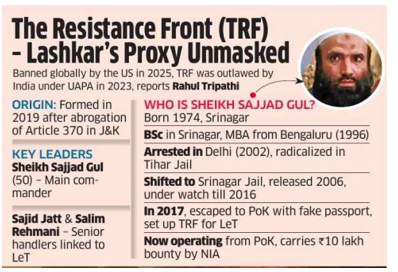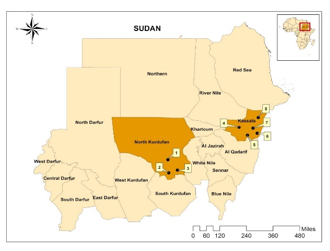

19th July 2025 (15 Topics)
Mains Issues
Context
India’s renewable energy sector has witnessed exponential growth and strategic transformation, making it globally competitive and investment-attractive.
Renewable Energy Expansion and India's Energy Transition Goals
- Introduction: India’s Green Energy Push
- India has set ambitious renewable energy targets, aiming for 500 GW of non-fossil fuel capacity by 2030.
- The renewable energy sector, especially solar, has witnessed exponential growth in the last decade.
- Transformation of the Renewable Sector
- Cost Decline and Tariff Competitiveness
- Solar tariffs dropped from ?10-18/unit (2010) to under ?2.5/unit by 2019.
- Improved economies of scale, competitive bidding, and foreign investments contributed.
- Investor Confidence and FDI Inflows
- From $2.1 billion (2008) to over $12 billion (2022).
- Clean energy projects now attract global funds similar to IPL franchise-level valuations.
- Role of Government Reforms
- Solar parks, transparent bidding processes, and policy clarity enabled market creation.
- Shift from subsidy-based incentives to market-driven models.
- Structural Achievements & Policy Milestones
- Institutional Support and Policy Measures
- National Solar Mission (2010), Ujjwala, and Saubhagya schemes promoted electricity access and clean energy.
- Renewable Energy Investment Promotion Board and Viability Gap Funding.
- Market Instruments and New Models
- Renewable Energy Certificates (RECs), Green Energy Open Access Rules.
- Public-private partnerships, hybrid energy parks, and grid-scale battery storage promoted.
- Challenges and Emerging Issues
- Grid Integration and Transmission Bottlenecks
- Interstate transmission constraints lead to curtailment of RE.
- Need for green corridors and storage solutions.
- Policy Uncertainty and Financial Health of DISCOMs
- Delayed payments, Power Purchase Agreement (PPA) renegotiations discourage private players.
- DISCOM financial restructuring is vital.
- Land Acquisition and Environmental Clearance
- Solar and wind parks often face delays due to land and forest clearances.
Way forward:
- Institutional Reforms: Establish robust dispute resolution and payment mechanisms for private investors.
- Financial Instruments: Promote green bonds, blended finance, and sovereign guarantees.
- Decentralised RE Models: Push for rooftop solar, peer-to-peer trading, and rural microgrids.
- Skilling and R&D: Invest in solar-wind hybrid tech, storage solutions, and hydrogen R&D.
- Global Collaboration: Leverage International Solar Alliance (ISA) and partnerships for tech and finance.


Mains Issues
Context
A section of the four-decade-old Mujpur–Ghambira bridge in Vadodara, Gujarat collapsed on July 9 while a family was crossing, resulting in 20 deaths and multiple injuries due to structural failure despite repeated warnings.
Structural Negligence and Policy Failures in Bridge Safety
- Structural Decline and Community Warnings
- Repeated Alerts Ignored: Villagers and local representatives—including district panchayat—had flagged cracks and shaking during heavy-vehicle movement since 2017.
- Government Response: Only minor repairs were undertaken, with proposals for a new bridge under periodic review but no tangible action taken.
- Immediate Cause: The collapse resulted from the “crushing of the pedestal and articulation”, per the State’s initial technical findings, underscoring long-term structural weakening.
- Disaster Impact on Vulnerable Lives
- Human Toll: The tragedy claimed the lives of 20 individuals, including a man praying for a male heir, highlighting the profound emotional, social, and economic impacts on bereaved families.
- First-Responder Lacunae: Despite prompt arrival of local communities and officials, rescue operations faced delays due to limited access and incapacitated infrastructure.
- Livelihood Disruption: The destroyed bridge disrupted access to Saurashtra, forcing a 50?km detour, affecting trade, healthcare access, and agricultural supply chains.
- Policy and Governance Gaps
- Reactive, Not Proactive: Infrastructure maintenance remained largely reactive; only post-tragedy were key bridges identified for closure, with ?212 crore sanctioned for a two-lane replacement.
- Accountability Undertaking: Suspension of four R&B officials indicates acknowledgement of administrative lapse, though substantive structural review and systems-level audit are not yet disclosed.
- Advocated Reforms: A high-level probe by R&B is underway; however, systemic reforms—like community surveillance integration and independent structural audits—are required to avert future disasters.
Way Forward
- Proactive Structural Audits: Mandate periodic third-party engineering evaluations of all state and rural bridges; develop risk maps and close high-risk structures proactively.
- Institutionalize Community Reporting: Create a formal, accessible channel for citizen reporting of infrastructure defects, with time-bound escalation protocols and transparent action reporting.
- Bridge Safety Oversight Board: Establish an independent regulatory body tasked with monitoring bridge safety, coordinating multi-stakeholder reviews, and enforcing engineering standards.
|
PYQ "Examine the role of local bodies and community participation in disaster risk reduction. Discuss with relevant examples." (2019) |


Prelims Articles
Context
The Prime Minister, Shri Narendra Modi today paid tribute to the great freedom fighter Mangal Pandey on his birth anniversary. Shri Modi lauded Shri Pandey as country's leading warrior who challenged the British rule.
Background and Significance
- Mangal Pandey is remembered as a symbol of India's first organized resistance against British colonialism.
- His actions are often considered the spark that ignited the Revolt of 1857, which later came to be known as the First War of Indian Independence.
Early Life
- Born on July 19, 1827, in a Brahmin family near Faizabad, Uttar Pradesh (then part of the North-Western Provinces under British rule).
- He was influenced by strong religious and cultural beliefs, which played a role in his opposition to British policies that offended religious sentiments.
Military Career
- Joined the British East India Company army in 1849.
- Served as a sepoy (private soldier) in the 6th Company of the 34th Bengal Native Infantry, stationed at Barrackpore, Bengal Presidency.
Immediate Cause of Revolt
- The introduction of the new Enfield rifle cartridges greased with cow and pig fat offended both Hindu and Muslim soldiers.
- Hindus considered cows sacred.
- Muslims viewed pigs as unclean.
- Soldiers had to bite the cartridge to load the rifle, which hurt religious sentiments, leading to widespread discontent.
Act of Rebellion (March 29, 1857)
- On this date, Mangal Pandey attacked British officers at Barrackpore.
- He fired at his superior officer, Sergeant Major Hewson, and encouraged other sepoys to rise in mutiny.
- His action was spontaneous, not pre-planned, but it later inspired widespread rebellion.
Punishment and Aftermath
- He was captured, court-martialed, and executed by hanging on April 8, 1857 at Lal Bagan, Barrackpore.
- The 34th Bengal Native Infantry was disbanded as a disciplinary measure, similar to the earlier 19th Infantry at Berhampore.
- Mangal Pandey’s martyrdom became a symbol of courage and resistance across India.
Legacy
- He is honored as a patriotic icon and freedom fighter in Indian history.
- The Indian government issued stamps in his name, and his story has been adapted into books, television shows, and films.
- Mangal Pandey Jayanti (July 19) is observed in his memory annually.


Prelims Articles
Context
The Department of Posts has announced the rollout of the upgraded APT (Advanced Postal Technology) Application across select post offices in Delhi on 21st July 2025, marking a significant advancement in digital transformation of postal services.
IT 2.0 Application
- The APT (Advanced Postal Technology) 2.0 Application is part of the Department of Posts' ongoing digital governance and modernization efforts under the broader India Post IT Modernization Project 2.0, which is aligned with the Digital India Mission.
- The application is aimed at providing enhanced user interface, faster service delivery, and a secure, efficient system for back-end operations and customer-facing services in post offices.
- The initiative involves a planned downtime on 21st July 2025, when no public transactions will be entertained across 36 post offices in Delhi to facilitate data migration, system validations, and final deployment.
- This transition is critical for ensuring standardized, real-time, and transparent service delivery, with digital integration of functions such as parcel booking, tracking, savings accounts, mail delivery, and grievance redressal.
- The initiative reflects India Post’s vision to become a technology-driven logistics and financial service provider, while maintaining its universal service obligation, especially in rural and semi-urban regions.


Prelims Articles
Context
Hedge funds are reaping significant gains after Chevron’s $53 billion acquisition of Hess Corp finally concluded, following a 20-month delay caused by arbitration challenges from ExxonMobil.
Hedge Funds
Definition and Nature
- A hedge fund is a private investment partnership that pools funds from high-net-worth individuals or institutional investors.
- It is managed by professional portfolio managers who employ aggressive and diverse strategies to maximize returns, including:
- Leverage (borrowed money)
- Derivatives
- Short-selling
- Arbitrage
- Investing in non-traditional assets (commodities, currencies, real estate)
Risk Profile and Investor Base
- Hedge fund investments are classified as alternative investment vehicles and are considered high-risk, high-return.
- They typically require a high minimum investment or net worth, thus targeting:
- Accredited investors (with income > $200,000/year or net worth > $1 million excluding primary residence).
- Institutional investors like pension funds, endowments, and insurance firms.
Regulatory Framework
- In India, hedge funds are not necessarily required to be registered with SEBI (Securities and Exchange Board of India), though Alternative Investment Funds (AIFs) under Category III may include hedge fund-like structures.
- Globally, hedge funds are less regulated compared to mutual funds, particularly in jurisdictions like the Cayman Islands or British Virgin Islands where offshore hedge funds are domiciled.
Hedge Fund vs. Mutual Fund
|
Aspect |
Hedge Fund |
Mutual Fund |
|
Target Investor |
Accredited / wealthy investors |
General public / retail investors |
|
Instruments Used |
Real estate, stocks, derivatives, currencies |
Stocks, bonds, money market instruments |
|
Regulation |
Lightly regulated (e.g., SEC, SEBI-AIF Cat III) |
Heavily regulated (e.g., SEBI, SEC) |
|
Liquidity |
Limited; Lock-in periods often apply |
High liquidity; redeemable on demand |
|
Strategy |
High-risk, high-return, often speculative |
Conservative to moderate, long-term growth |
|
Fee Structure |
High fees; typically "2 and 20" (2% mgmt + 20% profit) |
Low fees (usually 0.5%–2%) |


Prelims Articles
Context
Delhi's Indira Gandhi International (IGI) Airport has been awarded the ‘Net Zero Waste to Landfill’ Platinum Certification by the Indian Green Building Council (IGBC), becoming the first Indian airport to achieve this recognition during its operational phase.
Awarding Authority and Certification Purpose:
- The Indian Green Building Council (IGBC), under the Confederation of Indian Industry (CII), awards the ‘Net Zero Waste to Landfill’ Certification.
- The certification recognizes efforts in diverting at least 90% of operational solid waste from landfills through systematic waste segregation, composting, and recycling.
Significance of IGI Airport’s Achievement:
- IGI Airport has diverted approximately 95% of its operational waste, including food and recyclable waste, away from landfills.
- Techniques employed include real-time waste tracking, segregation using 2-bin and 4-bin models, Material Recovery Facilities (MRFs), and in-house composting
Complementary Achievements:
- In the previous year, IGI Airport also became the first Indian airport to be certified for Net Zero Carbon Emissions (Level 5 Certification), demonstrating efforts toward decarbonization.
- The terminal buildings of IGI are certified Platinum-rated by both IGBC and USGBC, highlighting adherence to international green building norms.
Implications for India’s Climate Goals:
- Such initiatives contribute to India’s commitment under the Paris Agreement and the broader agenda of sustainable infrastructure development under SDG 9 (Industry, Innovation, and Infrastructure) and SDG 13 (Climate Action).
- The move also supports India's national-level goals under the Waste to Wealth Mission and Swachh Bharat Mission – Urban 2.0.


Prelims Articles
Context
According to a July 2025 report by the Delhi Pollution Control Committee (DPCC), faecal coliform levels in the Yamuna River have exceeded permissible limits by over 4,000 times at several locations in Delhi, indicating severe contamination from untreated sewage.
Key Pollutants and Parameters:
- Faecal Coliform Count: At ITO Bridge, levels reached 92,00,000 MPN/100 ml, far exceeding the CPCB’s limit of 2,500 MPN/100 ml.
- Biochemical Oxygen Demand (BOD): Increased from 5 mg/l in June to 8 mg/l in July at Palla; peaked at 70 mg/l at ITO, against the CPCB safe limit of ?3 mg/l.
- Dissolved Oxygen (DO): Plummeted from 6.3 mg/l to 3.4 mg/l at Wazirabad; fell to near-zero further downstream, making the water uninhabitable for aquatic life.
Causes of Deterioration:
- Discharge of untreated and partially treated sewage from 22 drains entering the Yamuna in Delhi.
- Ineffective tapping and treatment of drains despite ongoing clean-up initiatives.
- Accumulated organic waste has significantly increased the river’s oxygen demand and bacterial load.
Regulatory and Monitoring Framework:
- The Delhi Pollution Control Committee (DPCC) conducts monthly monitoring of water quality at eight key locations in compliance with National Green Tribunal (NGT)
- The findings highlight non-compliance with CPCB guidelines under the Environment (Protection) Rules, 1986.
Implications:
- Such extreme levels of pollution indicate serious public health risks, loss of aquatic biodiversity, and failure to meet Water Quality Criteria (Class B and C) set by CPCB for bathing and aquatic life.
- Undermines objectives of the Namami Gange Programme and Yamuna Action Plan.
- Raises concerns regarding the urban water management and sewage infrastructure in the National Capital Region.


Prelims Articles
Context
The United States designated The Resistance Front (TRF), a shadow affiliate of Lashkar-e-Toiba (LeT), as a terrorist organisation on July 18, 2025, following its claim of responsibility for the Pahalgam attack that killed 25 tourists and a local ponywala.
The Resistance Front (TRF)
Nature and Origin of TRF:
- The Resistance Front (TRF) is considered a proxy or “shadow outfit” of Pakistan-based Lashkar-e-Toiba (LeT).
- It emerged shortly after the abrogation of Article 370 in August 2019, as a part of a strategy to give militancy in Jammu & Kashmir a façade of indigenous origin.
Rationale for Formation:
- TRF was created to bypass international scrutiny, especially while Pakistan was under the FATF Grey List.
- By creating such groups (e.g., TRF and PAFF), Pakistan sought to deflect responsibility for cross-border terrorism and present Kashmiri militancy as domestic resistance.
Operational Modus:
- Security agencies assert that TRF shares personnel, logistics, and intelligence with other groups such as LeT, Jaish-e-Mohammed (JeM), and Hizbul Mujahideen.
- It lacks a defined hierarchical or asset-based structure, making it difficult to dismantle through traditional counter-terror mechanisms like asset freezes.
Significance of US Designation:
- Diplomatic Victory for India: Reinforces India’s long-standing position on cross-border terrorism and exposes Pakistan’s duplicity.
- Increased Diplomatic Pressure on Pakistan: The designation places renewed pressure on Pakistan’s state apparatus to disassociate from such entities.
- Limited Ground Impact: Experts note that TRF, lacking global operations or tangible assets, may continue operating under a new name; the designation is largely symbolic unless followed by actionable international sanctions or intelligence coordination.


Prelims Articles
Context
INS Nistar, India’s first indigenously designed and constructed Diving Support Vessel (DSV), was commissioned into the Indian Navy at Visakhapatnam to support deep-sea diving and submarine rescue operations.
INS Nistar
Platform Overview:
- INS Nistar is one of two Diving Support Vessels (DSVs) ordered in 2018; its sister ship INS Nipun is expected to be commissioned soon.
- The vessel was indigenously designed and built by Hindustan Shipyard Limited with over 80% indigenous content involving around 120 MSMEs, showcasing the vision of Aatmanirbhar Bharat.
Technical and Operational Capabilities:
- Displacement: Approx. 10,500 tonnes; Length: 120 metres; Endurance: 60+ days at sea.
- Equipped with air and saturation diving systems, underwater ROVs, side-scan SONAR, and a 15-tonne subsea crane.
- Serves as the mothership for a Deep Submergence Rescue Vehicle (DSRV), acquired from the UK (James Fisher & Sons) in 2018–2019.
- Onboard facilities include an operation theatre, ICU, 8-bed hospital, and hyperbaric chamber.
Strategic and Regional Significance:
- INS Nistar strengthens India’s capacity for deep-sea submarine rescue operations, crucial for its growing submarine fleet.
- Enhances maritime domain awareness, HADR operations, and India’s role as a net security provider in the Indian Ocean Region (IOR).
- Places India among only 12 countries worldwide with dedicated DSRV capabilities.
- Dual-coast deployment: Nistar (Eastern Seaboard, Visakhapatnam) and Nipun (Western Seaboard, Mumbai) ensure rapid, simultaneous response capabilities.


Prelims Articles
Context
The World Health Organization (WHO) has released new guidelines recommending injectable lenacapavir (LEN) as a twice-yearly pre-exposure prophylaxis (PrEP) option for HIV prevention, announced during the IAS 2025 Conference in Kigali, Rwanda.
Lenacapavir (LEN):
- LEN is the first long-acting injectable PrEP approved for biannual administration to prevent HIV.
- Offers an alternative to daily oral PrEP (e.g., tenofovir-based regimens) and injectable cabotegravir (CAB-LA).
- Demonstrates high efficacy in clinical trials with minimal adherence challenges due to only two doses required per year.
Significance of WHO Recommendation:
- Addresses persistent HIV incidence (1.3 million new cases in 2024), particularly among key populations (e.g., sex workers, men who have sex with men, transgender individuals, injecting drug users).
- Enhances accessibility and acceptability of PrEP by reducing stigma and healthcare visit frequency.


Prelims Articles
Context
The World Health Organization (WHO) officially validated Burundi as having eliminated trachoma as a public health problem, making it the eighth country in the WHO African Region to achieve this status.
Trachoma
- Trachoma is a neglected tropical disease (NTD) caused by Chlamydia trachomatis and is the leading infectious cause of blindness worldwide.
- It spreads through personal contact, contaminated surfaces, and flies exposed to ocular and nasal discharges.
- Repeated infections can lead to trichiasis (inward turning of eyelashes) and blindness.
- WHO recommends the SAFE strategy for elimination:
- S: Surgery for trichiasis
- A: Antibiotics (e.g., azithromycin)
- F: Facial cleanliness
- E: Environmental improvement (water, sanitation)
- Globally, 24 countries have eliminated trachoma as a public health problem.
- The African Region bears the highest burden, with 90% of the global at-risk population residing there.
- Burundi joins seven other African countries: Benin, Gambia, Ghana, Malawi, Mali, Mauritania, and Togo in achieving this milestone.
- The validation by WHO reflects effective multi-sectoral collaboration and successful implementation of public health strategies targeting vulnerable communities.


Prelims Articles
Context
UNICEF has strongly condemned the killing of over 450 civilians—including at least 37 children and two pregnant women—in North Kordofan, Sudan.
North Kordofan, Sudan:
Geography & Demographics
- Location: North Kordofan is one of Sudan’s 18 states (wilayat).
- Area: Covers approximately 185,302 square kilometers—larger than many countries like Syria or Cambodia.
- Population: As of 2018 estimates, it has a population of around 17 million people.
- Capital City: El-Obeid, a key urban center and historically significant trade city in central Sudan.
- Climate & Ecology: Predominantly arid and desert, facing recurring droughts since the 1960s, making it ecologically fragile.
Historical and Cultural Context
- Ancient History: Archaeological discovery of graffiti of a Makurian king at Abu Negila highlights the region’s historic links to Christian Nubian kingdoms, especially the Makurian Kingdom, which flourished between the 6th and 14th centuries CE.
- Tribal Inhabitants: Historically inhabited by nomadic and semi-nomadic pastoral tribes such as:, Dar Hamid, Dar Hamar, Guamaa, Kababish
- These tribes practiced transhumant pastoralism, adapted to desert conditions.


Editorials
Context
Recent high-level meetings, including the Modi-Xi interaction at the 2024 BRICS Summit in Kazan, signal cautious diplomatic movement to reduce tensions post the 2020 Galwan Valley clash.
Strategic Recalibration Post-Galwan
- Resumption of Diplomatic Engagement: The Galwan incident of 2020 deeply strained bilateral ties; however, interactions at BRICS 2024 and SCO meetings indicate a cautious push toward de-escalation and resumption of ties.
- Military De-escalation Efforts: Indian ministers have advocated early disengagement and confidence-building in border zones, especially Eastern Ladakh, where patrolling and surveillance had become highly sensitive.
- China's Selective Sensitivities: While India reaffirms the One-China principle on Taiwan and Tibet, Beijing has shown little reciprocity towards India’s sensitivities on Jammu & Kashmir and Pakistan-sponsored terrorism.
Structural Asymmetries in Bilateral Relations
- Asymmetry in Respect and Reciprocity: India seeks parity in bilateral conduct, but China continues to back Pakistan diplomatically, obstructing counter-terror consensus at the UN and SCO, undermining mutual trust.
- Weaponisation of Soft Power and Institutions: China’s use of Confucius Institutes, surveillance via Chinese firms, and alleged espionage through academics or apps have deepened Indian security concerns and prompted regulatory crackdowns.
- Lack of Transparency and Consistency: Frequent Chinese incursions, ambiguous messaging, and strategic ambiguity on the border prevent the normalisation of relations, thereby stalling regional stability efforts.
Future Trajectory and Diplomatic Priorities
- Strategic Signalling through Multilateral Forums: The BRICS platform, while valuable, is not sufficient for resolving bilateral issues; India's positions on sovereignty and security must be recognised explicitly in bilateral frameworks.
- Trade and Economic Disparity: Despite strong trade figures, there is insufficient economic interdependence to offset political distrust. India remains wary of China’s economic coercion and supply chain vulnerabilities.
- Need for Balanced and Equitable Framework: India calls for mutuality in core concerns—terrorism, sovereignty, and non-interference—while China must move beyond symbolic cooperation to real, verifiable commitments.
Practice Question:
"The normalisation of India-China relations cannot occur in a vacuum; it must be grounded in mutual respect, strategic reciprocity, and clarity on core concerns." Examine in the context of recent bilateral developments and regional geopolitics. (250 words)


Editorials
Context
The World Bank’s “India Poverty and Equity Brief: April 2025” has sparked debate by claiming a significant reduction in consumption inequality and near-eradication of extreme poverty in India based on recent Household Consumption Expenditure Survey (HCES) data.
Evidence from HCES and World Bank Findings
- Major Findings – Consumption Inequality: According to the World Bank, India’s Gini coefficient for consumption declined from 28.8 in 2011-12 to 25.5 in 2022-23, placing India among the top four least unequal countries in terms of consumption distribution.
- Basis of Measurement – HCES and MMRP: The findings are grounded in the Household Consumption Expenditure Survey (2022-23), using the Modified Mixed Reference Period (MMRP) methodology—aligned with global best practices—and adjusted partially for in-kind government support.
- Limitations and Validity: Critics argue that elite consumption is underrepresented; however, this is a universal limitation in household survey methodologies and does not negate the observed trend among 95% of the population.
Broader Economic Trends and Welfare Impact
- Dietary and Welfare Improvements: Between 2012 and 2023, per capita milk and egg availability rose by 45% and 63% respectively, with increased consumption of fruits, vegetables, and proteins, especially among the bottom 20% of rural and urban households.
- Poverty Reduction – Multidimensional Indicators: Based on Rangarajan, Tendulkar, and MPI frameworks, approximately 270 million people have moved out of extreme poverty between 2011 and 2023, indicating substantial welfare gains.
- Infrastructure and Mobility Gains: Schemes like PMAY-G and PMGSY contributed to a sharp increase in pucca housing and rural road connectivity, enabling over 40% of the poorest 20% to own a vehicle in 2023, up from just 6% in 2011.
Revisiting Income Inequality and Data Sources
- World Inequality Lab’s (WIL) Methodological Issues: WIL estimates rely heavily on income tax records and outdated consumption data, assuming that 70%-80% of households spend more than they earn, leading to underestimation of bottom income shares.
- Income Distribution Trends (2017–2022): Even with WIL data, the bottom 50%’s share in national income increased from 9% to 15%, while the top 10%’s share declined from 58.8% to 57.7%, suggesting stable or declining income inequality.
- Role of Post-Tax and Subsidy Adjustments: Most inequality narratives overlook post-tax, post-transfer incomes. With welfare spending exceeding 8% of GDP, real inequality is likely overstated, especially given that top 1% of individuals pay 42% of income tax.
Practice Question:
Critically examine the assertion that India’s inequality narrative is often misrepresented due to methodological flaws in data estimation. In this context, discuss the significance of distinguishing between consumption and income inequality. (250 words)


Editorials
Context
The Union Cabinet has approved the PM Dhan-Dhaanya Krishi Yojana (PMDDKY), which aims to enhance agricultural productivity through the convergence of 36 schemes across 11 ministries, beginning October 2025.
Structural and Administrative Framework of PMDDKY
- Multi-Scheme Convergence: The PMDDKY integrates 36 existing schemes from 11 departments, including flagship programmes such as PM-KISAN and PM Fasal Bima Yojana, for targeted agricultural development.
- District-Level Implementation: District Dhan Dhaanya Samitis will identify local State schemes for inclusion and draft district-specific agricultural plans aligned with national objectives.
- Central Monitoring Mechanism: The Centre will track progress across 117 key indicators monthly, ensuring timely course correction and policy responsiveness.
Objectives and Strategic Rationale
- Targeting Regional Disparities: The scheme seeks to reduce intra- and inter-State disparities in agricultural productivity and credit disbursement by focusing on 100 identified low-productivity districts.
- Focus on Self-Reliance: The scheme aims to promote value addition, crop diversification, and increased domestic production in critical sectors such as foodgrains, edible oils, and pulses.
- Integration of Private Sector: Through Public-Private Partnerships (PPP), the government seeks to harness private capital and technology for sustainable agricultural transformation.
Challenges and Structural Concerns
- Decline in Public Agricultural Spending: Parliamentary data reflects a continuous decline in agriculture’s share of the total Central Plan outlay—from 3.53% in 2021–22 to 2.51% in 2025–26—raising concerns over the scheme’s fiscal commitment.
- Risk of Over-Uniformity: The pursuit of a uniform agricultural model may overlook local agro-ecological diversity, thereby risking inefficacy at the grassroots level.
- Need for Participatory Governance: Success of PMDDKY depends on active involvement of local self-governments, Primary Agricultural Credit Societies (PACS), agri-universities, and farmers' collectives.
Practice Question:
Discuss the objectives and implementation challenges of the Prime Minister Dhan-Dhaanya Krishi Yojana (PMDDKY). Do you think convergence of schemes is a sustainable model for agricultural transformation in India? Substantiate your argument. (250 words)






